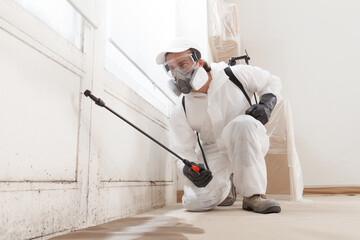Water damage is one of the most common and destructive problems that can affect both residential and commercial properties. It can result from natural disasters such as floods and storms, plumbing failures, leaky roofs, or malfunctioning appliances. Regardless of the source, water can spread quickly, seeping into walls, floors, ceilings, and furniture, causing structural damage, property loss, and creating conditions for mold and mildew growth. The consequences of water damage can be severe, ranging from compromised building integrity to health hazards for occupants.
Prompt and professional Water Damage Restoration Salt Lake City services are essential to minimize damage, restore properties, and protect the safety and well-being of residents or employees. These services combine expert assessment, advanced equipment, and proven restoration techniques to address water intrusion effectively and prevent long-term issues.

The first step in any water damage repair service is a comprehensive assessment of the affected property. Professional technicians examine the site to determine the extent of the damage, identify the source of water, and assess how deeply moisture has penetrated building materials. This process is critical because water can infiltrate hidden areas such as subfloors, wall cavities, or insulation, creating risks that may not be immediately visible. Experts use advanced tools like moisture meters, thermal imaging cameras, and hygrometers to detect the presence of water and measure moisture levels accurately. By understanding the full scope of damage, water damage repair professionals can develop a targeted and efficient restoration plan, ensuring that all affected areas are addressed and reducing the likelihood of recurring problems.
Once the assessment is complete, the focus shifts to water extraction, the most urgent phase of repair. Standing water can cause further damage within hours, weakening structural components, warping floors, and damaging personal belongings. Professional water damage repair teams use industrial-grade pumps, wet/dry vacuums, and specialized extraction equipment to remove water quickly and safely. Unlike basic household tools, this equipment allows for rapid removal of large volumes of water, significantly reducing the risk of prolonged exposure and minimizing the potential for structural and cosmetic damage. Efficient water extraction is a critical first step in preventing secondary issues such as mold growth, which can begin within 24 to 48 hours if moisture is left untreated.
Following water extraction, thorough drying and dehumidification are essential. Water that has penetrated flooring, walls, or furniture must be dried completely to prevent long-term damage. Water damage repair professionals employ industrial air movers, high-capacity dehumidifiers, and specialized drying techniques to remove residual moisture. This process not only protects structural integrity but also mitigates health risks associated with mold and mildew. Technicians continuously monitor moisture levels throughout the drying process to ensure that all areas are fully dried, including hidden spaces and hard-to-reach corners. This meticulous approach guarantees that the property is safe, stable, and prepared for the next phase of repair and restoration.
Mold prevention is a crucial aspect of water damage repair. Mold can grow rapidly in damp environments, causing damage to building materials, compromising indoor air quality, and posing health hazards. Professional water damage repair services address this by treating affected areas with antimicrobial solutions and implementing moisture control measures. Proper drying, cleaning, and treatment of surfaces ensure that mold does not have the conditions it needs to thrive. By integrating mold prevention into the repair process, professionals safeguard both the property and the health of its occupants, preventing the need for additional remediation in the future.
Structural repairs are another key component of comprehensive water damage repair services. Water can weaken or warp building materials such as drywall, wood framing, flooring, and ceilings. Repair professionals assess the extent of structural compromise and implement necessary fixes, which may include replacing damaged drywall, reinforcing wood supports, or repairing subfloors. By addressing structural damage promptly, water damage repair services prevent further deterioration and restore the property to a safe and functional condition. This level of expertise ensures that the repairs are not only cosmetic but also preserve the integrity and longevity of the building.
For residential properties, water damage repair services are essential for maintaining a safe, healthy, and comfortable living environment. Water intrusion can damage valuable personal belongings, electronics, and furniture, as well as compromise the functionality of critical systems such as heating and electrical components. Professional repair services not only restore the property but also guide on preventing future water damage, including recommendations for improved drainage, appliance maintenance, and waterproofing solutions. Homeowners gain peace of mind knowing that their property is protected and that potential risks are mitigated.
Commercial properties face additional challenges when dealing with water damage. Offices, retail spaces, and industrial facilities often contain equipment, inventory, and important documents that are highly vulnerable to water exposure. Even minor water intrusion can disrupt business operations and result in financial losses. Water damage repair services for commercial properties are designed to minimize downtime and protect valuable assets. Technicians coordinate with building managers to implement rapid response strategies, efficiently extract water, and restore the space to a functional state. This allows businesses to resume operations quickly while safeguarding property and equipment from further harm.
Safety is a paramount consideration throughout the water damage repair process. Water can create hazards such as slippery surfaces, exposed electrical systems, and weakened structural components. Professional technicians are trained to handle these risks safely, using protective equipment, following strict safety protocols, and ensuring that the property is secure during the repair process. In addition, water damage repair teams are knowledgeable about the potential hazards associated with contaminated water, including sewage or floodwater, and take appropriate measures to handle and disinfect affected areas. This comprehensive approach to safety protects property occupants, workers, and the property itself.
Technology and advanced equipment are central to the effectiveness of water damage repair services. Industrial-grade water pumps, high-capacity dehumidifiers, air movers, moisture meters, and thermal imaging cameras enable professionals to assess and address water damage with precision. These tools allow for rapid extraction, thorough drying, and accurate monitoring of moisture levels, ensuring that no hidden areas are overlooked. Modern water damage repair services also incorporate digital project management systems to track progress, coordinate tasks, and maintain clear communication with clients throughout the restoration process. This combination of expertise and technology ensures efficient, reliable, and high-quality results.
Time is a critical factor in water damage repair. Delays in response can result in further structural damage, mold growth, and increased restoration costs. Professional water damage repair services offer rapid deployment and emergency response, understanding that every hour counts when mitigating damage. Fast intervention limits the spread of water, reduces the risk of secondary issues, and ensures that repairs can proceed efficiently. Property owners benefit from the prompt, professional service that restores their property and minimizes the overall impact of water damage on their lives or business operations.
In addition to addressing immediate water damage, professional repair services emphasize long-term prevention and maintenance. Recommendations may include improved drainage, waterproofing solutions, regular inspection of plumbing and appliances, and environmental controls to reduce humidity. By combining immediate repair with preventive strategies, water damage repair services help property owners avoid recurring problems and protect their investment over time. This proactive approach not only restores the property but also contributes to its overall resilience and longevity.
Ultimately, water damage repair services are essential for protecting property, maintaining safety, and ensuring the long-term value of homes and commercial buildings. They provide a comprehensive solution that addresses water extraction, drying, structural repair, mold prevention, and long-term mitigation strategies. With skilled technicians, advanced equipment, and proven restoration techniques, professional water damage repair services deliver efficient, safe, and reliable results. For property owners facing the stress and disruption caused by water intrusion, these services provide a critical lifeline, restoring both the property and peace of mind.
In conclusion, professional water damage repair services are a vital component of property maintenance and disaster response. Water intrusion can have far-reaching effects on structural integrity, personal belongings, and occupant health, making timely and thorough intervention essential. Through assessment, water extraction, drying, mold prevention, structural repair, and long-term mitigation, water damage repair professionals ensure that properties are restored safely and effectively. By combining expertise, advanced technology, and emergency response capabilities, these services protect both residential and commercial properties, safeguard health, and preserve the value and functionality of buildings. Investing in professional water damage repair is a proactive step toward minimizing damage, preventing future issues, and restoring confidence and stability after water-related incidents.

